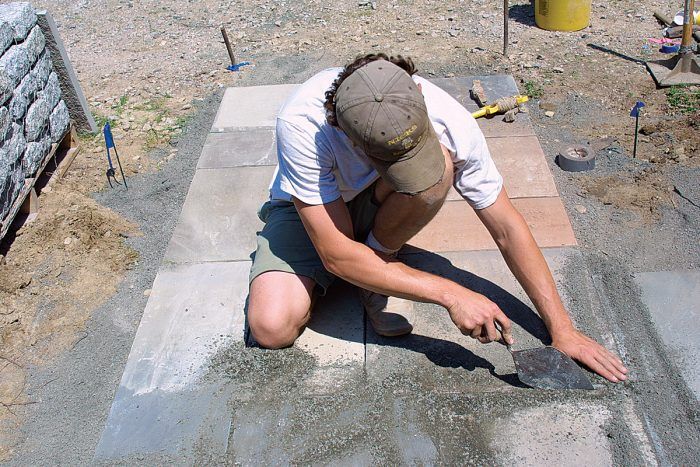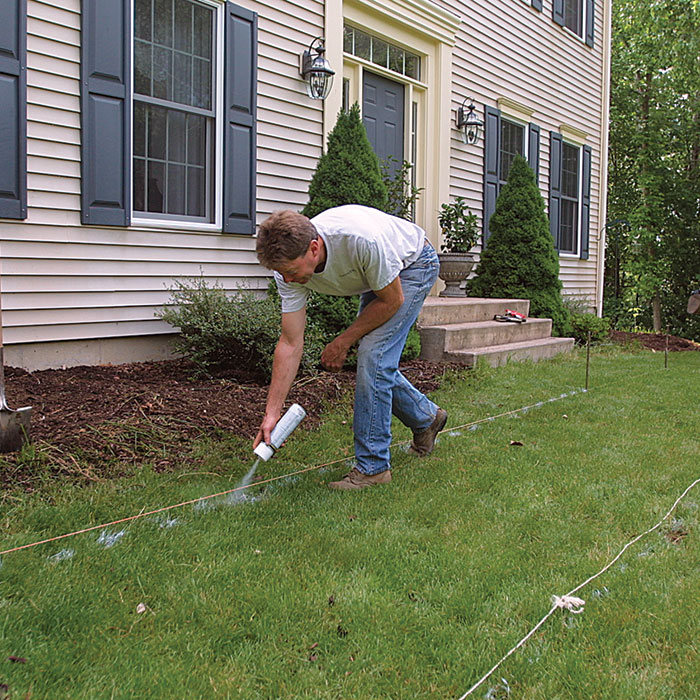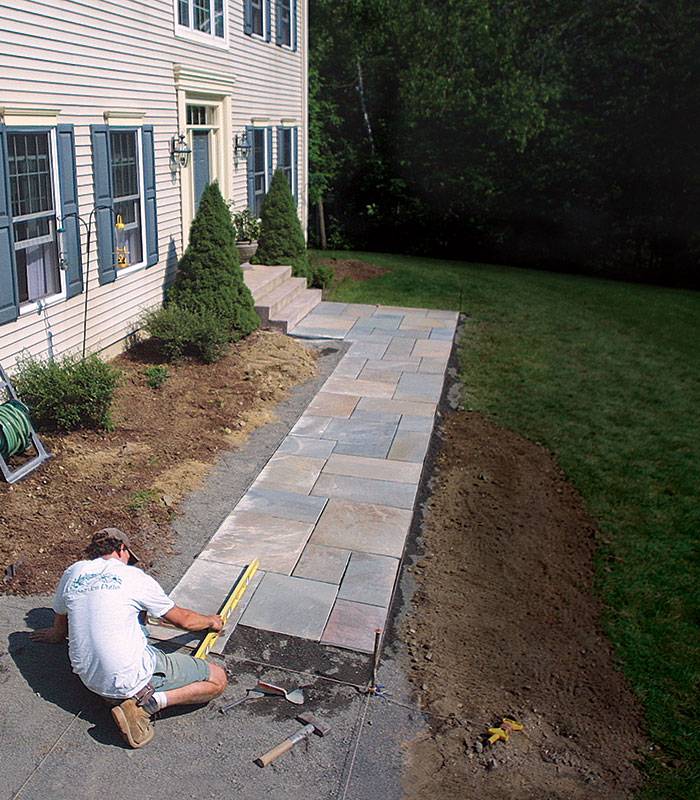Laying a Flagstone Walkway
Setting the stone is the fun part; preparing a solid base first will make the walk last.

Synopsis: A dry-laid walkway, with no mortar, is less expensive and less prone to cracking from freeze-thaw cycles. This articles details the step-by-step installation with special emphasis on the base layer of stone dust and trap rock. A sidebar offers options for cutting flagstone.
Every house needs a walk. Walks are useful and inviting, and installed with care, they can add to the appeal and value of a home. Flagstone is a popular choice for walks because it looks natural and creates a smooth walking surface.
Flagstone isn’t a particular type of stone. It’s the term for any big, flat, quarried stone used for walks, patios, or floors. Some flagstone is cut into rectangular shapes, and some has rough, natural edges. Here in the Northeast, where I work as a landscape contractor, bluestone is the most common choice for walks. Flagstone can be laid dry (on a bed of stone dust) or wet (in concrete).
But there are drawbacks to laying a walk in concrete. It is a more expensive and involved process, and in colder climates, concrete is prone to cracking during freeze/thaw cycles. If a stone moves in a dry-laid walk, it is simple to fix. Also, a dry-laid flagstone walk looks natural in a mature landscape; concrete detracts from this aesthetic.
Before you break ground
The best path from the front door to the street or driveway is not the only thing to consider when planning a walk, but it is the first thing. Walking patterns tend to be similar. If one person cuts a corner when walking around a garden, the next person likely will do the same thing. So when I plan the course of a walk, I think about the path I would take if there were no walk in front of me.
Although people generally take the shortest path from one place to the next, a walkway should feel comfortable. I like to pull the walk away from the house so that it doesn’t feel crowded and people can comfortably look at the house or gardens while using the walk.

The distance between the walk and the house also can affect the perceived size of the house. For taller houses, like colonials, I usually recommend a walk that is farther from the house, say 12 ft. For a ranch or Cape, 6 ft. may be enough. Also, the space between the walk and the house likely will be a planting bed, and it is a good idea to give new plants plenty of room to mature.
I also consider the house’s style when I decide whether the walk should be straight or curved. While putting a slight radius on corners softens the look of a straight walk, a curved walk can be tricky because people don’t naturally walk in a roundabout path from one place to the next. However, in the right landscape, a curved path can add character and give planting beds an interesting line to play off.
A drawing is a great way to plan a walk, but it isn’t the best way to visualize how it will look in the landscape. I paint the outline of the walk on the ground to create a better sense of what it will look like.
—Eric Nelson is a landscape contractor and designer in Bethlehem, Conn.
Photos by Brian Pontolilo.
Drawings: Dan Thornton.
For more photos and details for laying a flagstone walkway, click the View PDF button below.
From Fine Homebuilding #158






